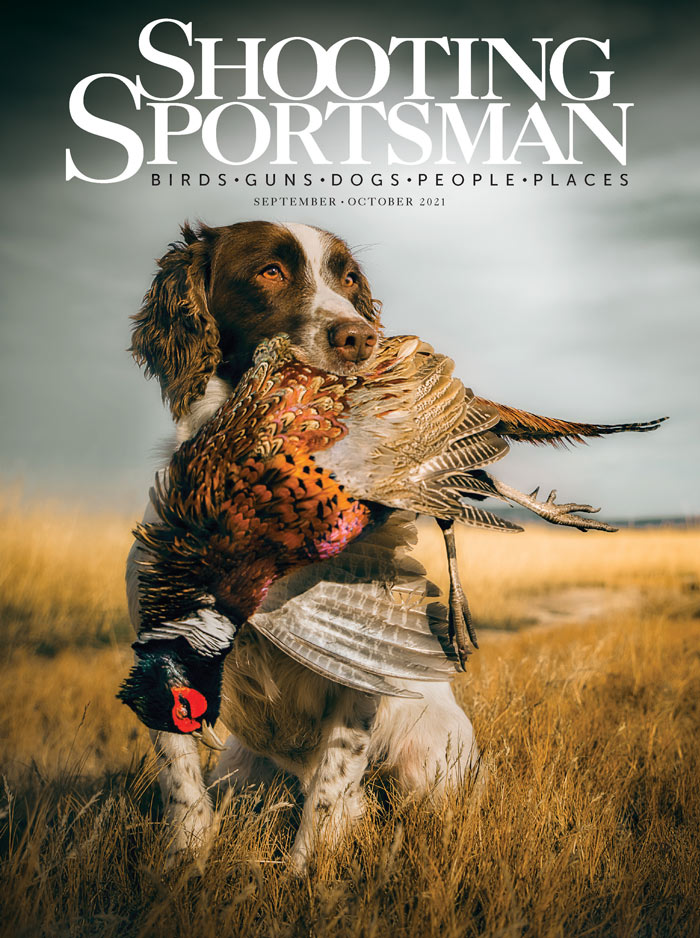Seven combo hunts to add variety to your bag
Text and photos by Ben Brettingen
It’s time to mix it up and mingle with the multitude of birds across the country, because if the past year has taught us anything, time is too precious and life is too short to hunt just one species. Thankfully there is an abundance of areas to chase multiple species on the same day, if not the same walk. It adds a whole different element when you’re walking behind a pointing dog and not only anticipating the dog pulling the e-brake and sending its tail skyward but also not knowing what kind of bird is going to get up. Will there be the thumping wingbeats of a cackling rooster or the buzz of an explosive covey of quail? Following are seven multi-species areas to put on your mixed-bag list.
Prairie Grouse Plains
South Dakota has been pigeonholed as the Pheasant Capital of the US, and while the title is deserved, many people have blinders on as they walk the endless strips of native grasses and milo. But the state is one of the best places to hunt not only pheasants but also prairie chickens and sharp-tailed grouse. In need of a tour guide to point out the world-class bird hunting? Well, let me lead the way . . . .
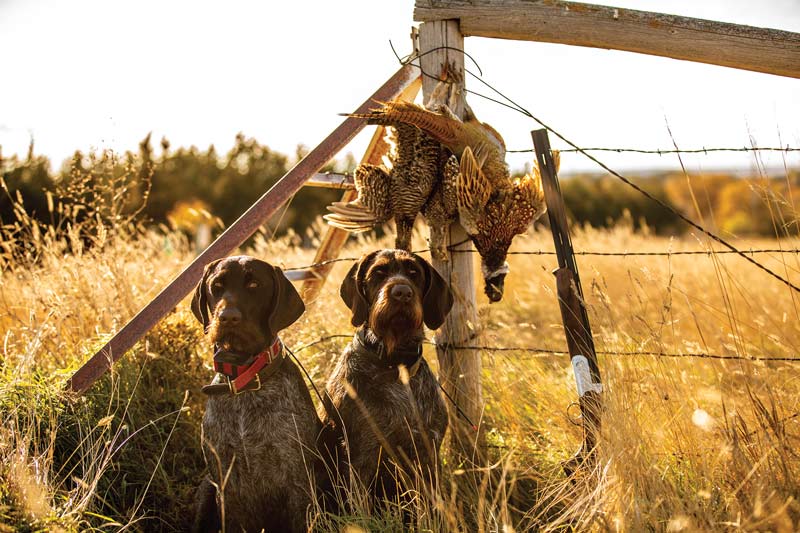
To begin, as we round the next corner you’ll see 100,000-plus acres of publicly accessible ground chock-full of pheasants, sharptails and prairie chickens. It amazes me why more hunters don’t take advantage of the Fort Pierre National Grasslands and the surrounding private land enrolled in the state’s Walk-in Area Program. In September, before pheasant season opens, there will be more people chasing prairie birds here, but as soon as pheasant season starts, in mid-October, the world pretty much forgets the area exists. With shooting hours for pheasants not starting until 10 am each day, the first few hours of the morning are wide open to walk for grouse. Still, the grasslands typically are empty.
I hadn’t spent much time in the grasslands until four years ago, when I went to hunt prairie grouse with little knowledge of the area. The weather was cold and nasty, and expectations for shooting birds over points were admittedly low. But even with a wind-blown rain pelting us in the face, we found five coveys of sharptails and three coveys of prairie chickens before trading our No. 7½ shot for No. 6 to chase roosters at noon. (Back then pheasant hunting didn’t start until noon.) After a few days of this ritual, we decided it wasn’t even worth leaving the short-grass prairies to chase pheasants in more traditional cover, as we were finding plenty of roosters in the knee-high grass.
The key to finding all three species in the same area was the presence of crops adjoining the grass. The most productive crops were milo, wheat and alfalfa. Another thing to keep in mind is that not all parts of a property are created equal. The bottoms in this rolling country sport small creeks and thus thicker vegetation—perfect habitat for roosters. Moving up the hills, the grass becomes shorter, providing ideal cover for prairie grouse.
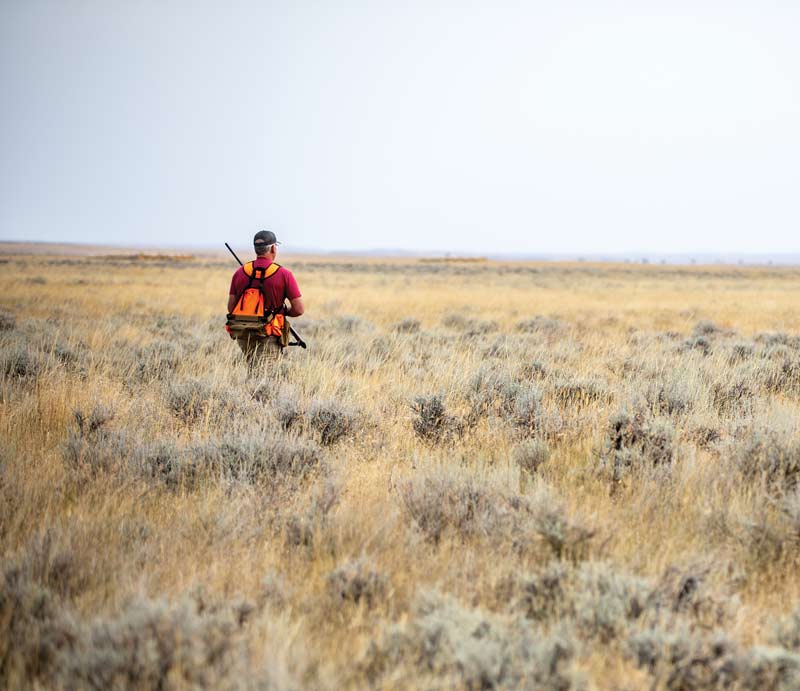
Big Sky Country
The open expanses and overwhelming bird numbers of Montana have a way of impairing my judgment—in the sense that they would tempt me to go Johnny Paycheck on the boss man and tell him to “take this job and shove it!” Montana is one of the few places that would make me consider uprooting my life just to go bird hunting four months of the year.
There is a reason field-trialers from across the country head to Montana in the early season to get their dogs into wild birds. With a September 1 opener for sharptails, Hungarian partridge and sage grouse, there is a figurative charcuterie board of opportunities. As in South Dakota, I’ve seen all three early season species harvested in the same walk. Of course, this is not the norm, but it’s often possible with a few short drives.
While the far eastern side of Montana is loaded with sharptails and Huns, it’s best to start looking in a large swath extending from the southeast corner of the state up through the Havre area. This area holds the most sage grouse and no shortage of the other two species.
In my experience sharptails and Huns are the easiest of the three to find, while sage grouse require burning good old-fashioned boot leather. One of the best areas to find sage grouse is in the remote southeast corner of the state in Carter County. Bureau of Land Management ground offers the most public hunting opportunities, but don’t overlook the square-mile blocks of state land scattered across the landscape.
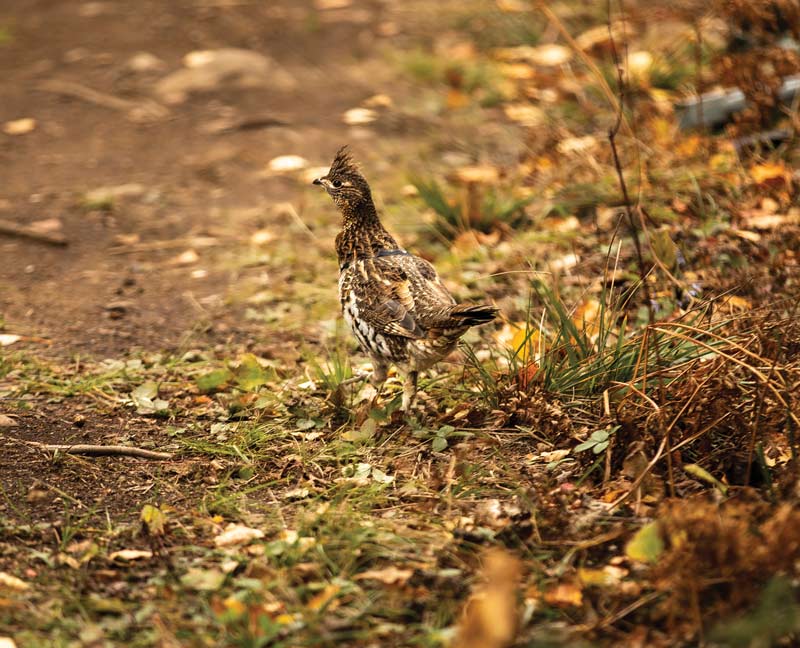
Gichi-gami Grouse
The shores of Lake Superior, also known by its Ojibwe name, Gichi-gami, are well known to Great Lakes States residents, but soon after you drift away from the water, the roads are (much) less traveled. Many see the area as more of a vacation destination, but hardcore grouse hunters don’t want to overlook it.
There are many reasons the ruffed grouse is labeled the “king of the uplands,” and one of them is because of the bird’s popularity in the region. However, if hunters are looking for a little variety, woodcock and spruce grouse also call the area home. With the vast majority of the spruce grouse’s range lying in Canada, the Arrowhead Region of Minnesota is one of only a few places east of the Rockies where spruce grouse can be hunted. (In Wisconsin spruce grouse are listed as threatened, and in Michigan they are a species of “special concern.”) The farther north you get in Minnesota, the better your chances of harvesting a spruce grouse.
During October, woodcock start migrating through Minnesota, and for hunters who time their visits right, it isn’t uncommon to have 20-plus flushes per day. The trick is to find low-lying areas with thicker stem densities. Thankfully, there is no shortage of places to hunt grouse and woodcock in the Arrowhead Region, with large tracts of prime habitat found in the Superior National Forest, various state forests and department of forestry lands.
The region’s timber industry is very healthy, and the Minnesota DNR is actively managing many areas specifically for grouse habitat. While hunting opportunities are no secret to residents of the Land of 10,000 Lakes, the sheer amount of land available makes it easy to spend a day without seeing another hunter. Those willing to get off the roads and trails typically have the entire area to themselves. At the end of September, the trees come alive in bright yellows, oranges and reds. With the backdrop of Lake Superior, the region’s beauty is unmatched, making this one of the country’s most picturesque hunts.
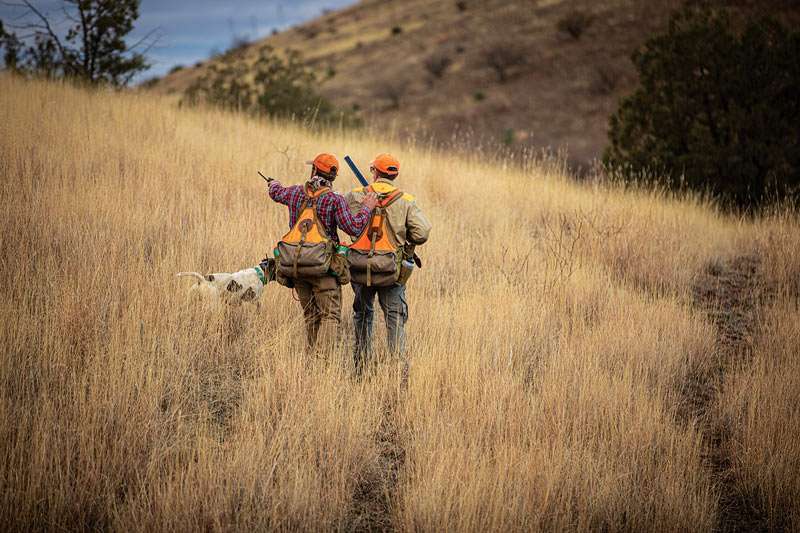
Jayhawk Bobs & Roosters
Kansas is home to the best opportunities to get into quality numbers of both bobwhite quail and pheasants. The first time I walked a Kansas field, I was awestruck by not only the number of roosters but also how many coveys of quail called the tree-lined draws and field edges home. For much of the Southern US, Kansas is the closest place to hunt roosters. With historic harvests exceeding 500,000 birds annually, the state ranks in the top three or four in the country.
The southwest portion of the state is typically a powerhouse, supporting the highest densities of roosters each year. This region has a lot going for it and is one of my favorites for getting into pheasants and quail in the same walk. Scaled quail are found in the southwest corner, as well, and with one license hunters can pursue three species in the same trip. With more than 100,000 acres of public land and an additional 175,000 acres of private land enrolled in the Walk-in Hunting Access (WIHA) program, there are ample opportunities to find birds.
If adding a prairie chicken to the mix is of interest, Kansas has you covered. However, you’ll have to head east, as the southwest is occupied by the threatened lesser prairie chicken, making the region closed to hunting chickens. Don’t worry, though, as north-central Kansas has the highest densities of greater prairie chickens and more than 300,000 acres of land on which to hunt them. The Smoky Hills region also has the state’s highest densities of quail, making it well worth a stop.
Because Kansas is located farther south than many pheasant states, one of my favorite times to travel there is in December and January. At that time the birds of the Upper Midwest have been driven into “cattail hell” by cold temperatures and snow, but Kansas usually welcomes hunters with a more temperate climate. A word to the wise, however: If you see snow in the forecast, it’s time to head there now! A blanket of snow creates the perfect situation for a once-in-a-lifetime hunt.
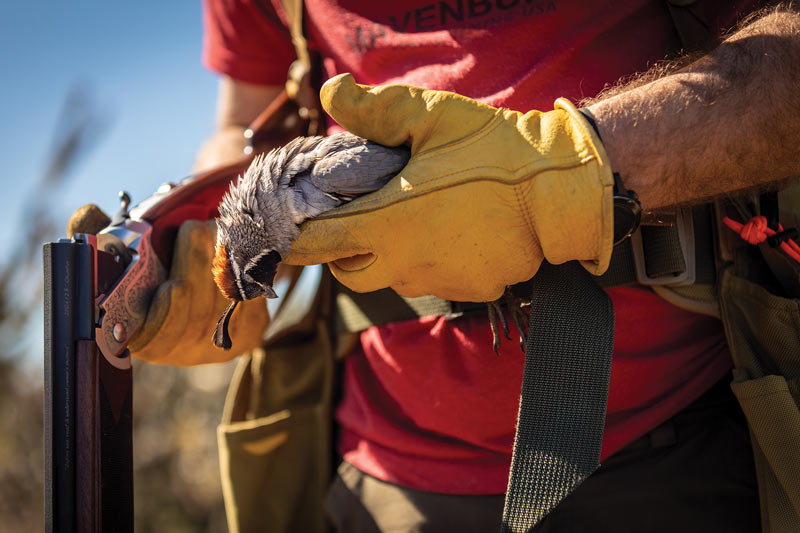
Unbroken-Prairie Grouse
There are few places that rival the untamed native prairies of the Sandhills area of Nebraska. As you crest hill after hill, it almost transports you back in time, thinking about the thousands of miles of unbroken prairie that once dominated the Midwest. Bringing things full circle is the chance to hunt two of America’s native gamebirds: prairie chickens and sharptails.
Mid-September to mid-October is one of the best times to travel to the Cornhusker state, as early season birds are plentiful and hold well for pointing dogs. Bring plenty of water, though, and keep an eye on your dogs, as temperatures at that time of year are frequently in the 90s.
There are a few popular areas that offer this transcendental experience—the Valentine National Wildlife Refuge and the Samuel R. McKelvie National Forest being a couple of the best.
Sky Islands Quail
In recent years southeast Arizona has been an upland pilgrimage for hunters in search of desert quail. The mountains around Sonoita and Patagonia are called the “Sky Islands,” as they protrude from a sea of flat desert, creating an oasis for Mearns, also known as Montezuma, quail. The scrub oak woodlands and mixed pines combined with an understory of grass create the perfect habitat for these birds. It’s one of the best areas in the US to find them, with the majority of the Mearns’ range being in Mexico.
While this is not as physically challenging as other mountain hunts, be prepared to cover at least 10 to 15 miles per day in search of the Harlequin-masked birds. On a good day you should expect to find four to six coveys, with a 10-covey day being impressive.
Mearns quail rely on summer monsoon rains, so when researching areas to hunt, it can be helpful to consult rainfall maps to find areas with more moisture. Even slight rainfall differences between neighboring canyons can make tremendous differences in the number of birds.
As you drop in elevation to the desert floor, you’ll find Gambel’s quail inhabiting the thorny arroyos. There are definitely Gambel’s quail close to Mearns country, but some of the better areas are found northwest of Phoenix. The area along Highway 93 from Morristown to Kingman offers plenty of public ground on which to find the fleet-footed birds.
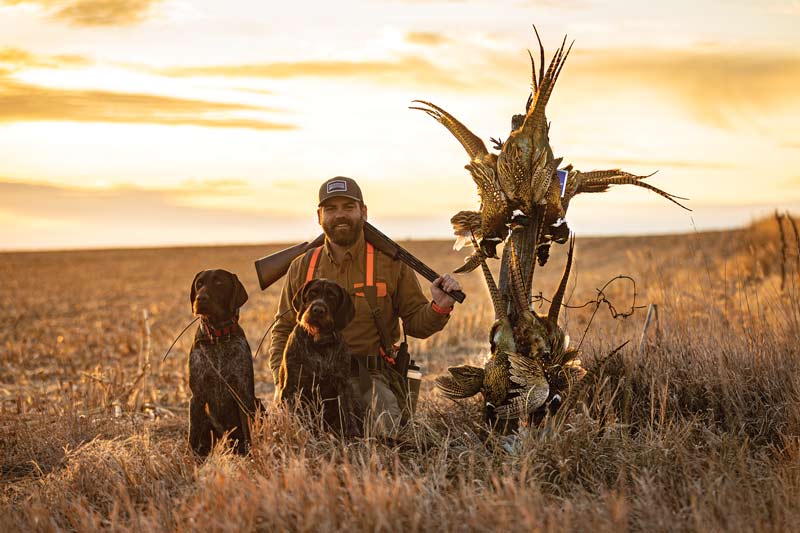
A word of caution to traveling hunters with dogs: This terrain is rough. Dogs that have grown up among the cactus learn quickly to avoid the thorns. If you’re bringing a dog, be sure to invest in a good pair of dog boots. It can mean the difference between hunting for days versus hours.
Heading to Hell
If you want to test your stamina against one of the most demanding gamebirds, there are few places that rival Hells Canyon along the Snake River in Idaho, Washington and Oregon. Hells Canyon is synonymous with chukars, as it’s one of the best places to hunt them. However, if you’re making the trip and want to add a few more birds to your bag, Hungarian partridge and valley quail also inhabit the area.
Chukars are found along the rimrock in some of the steepest and nastiest country, and once you find the elevation where the birds are hanging, continue sidehilling. As you drop in elevation to the slightly more forgiving benches, you’ll run into Huns and valley quail. Wooded draws filled with briars are especially good places to find valley quail.
With more than 40 percent of Hells Canyon being accessible to the public, there are ample opportunities to pursue all three species. That’s a lot of country, and it can be daunting to try to pick an area out of hundreds of thousands of acres. State biologists can be helpful in pointing you in the right direction to start. The rest is up to you, your dog and your willingness to burn boot leather . . . .
Hailing from Minnesota, Ben Brettingen grew up chasing anything with feathers or fur. With his two Drahthaars and pointer, he now spends each fall chasing upland birds and waterfowl across North America. When Ben is not running dogs, you won’t find him too far from the field, as he works for onX Hunt as the Midwest and Wingshooting Manager.


